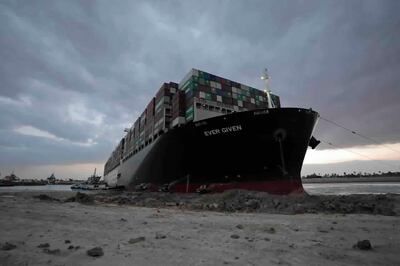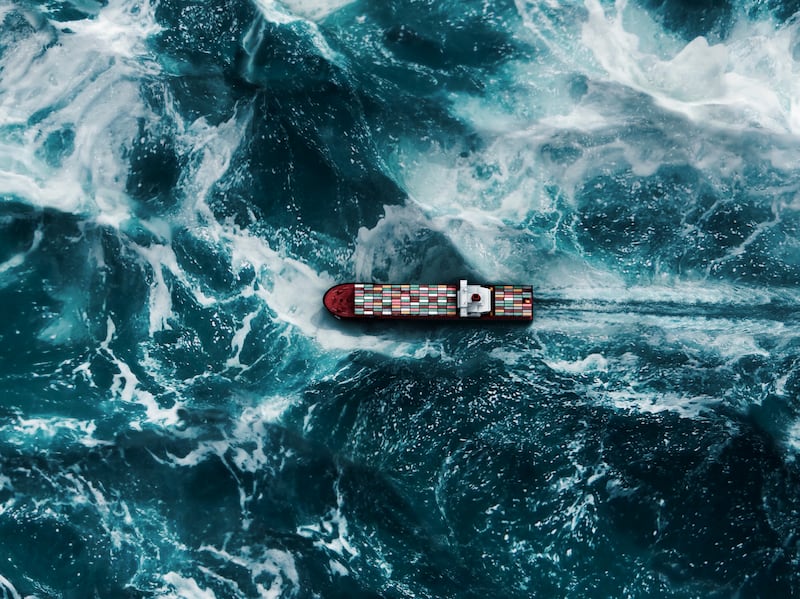In the container shipping business, survival requires a strong balance sheet – and a strong stomach. In 2009, in the wake of the global financial crisis, the companies that run the giant ships that knit the world together managed to lose $15 billion in a single year. A year later, they booked record profits. Years of hard times followed, forcing many container lines to find merger partners. Then came Covid-19: as governments flooded their economies with cash to avert a recession, consumers gorged on the sorts of goods that move in containers, driving the industry’s profits to a stratospheric $360 billion in 2021 and 2022.
The fall to earth has been painful. The rate ship lines charge for carrying a 40-foot container from Shanghai to Rotterdam has plummeted from $8,000 a year ago to around $1,600 today. Profits are slumping, and major challenges lie ahead.
Historically, excess capacity has been a chronic problem for the container industry, and it is about to return in a big way. During the pandemic-driven boom, shipyards were swamped with orders for new vessels. While many older ships will be scrapped as new ones are launched, the newly built ships are far larger than the ones they will replace.
The capacity of a container ship is usually stated in 20-foot equivalent units, or TEUs, with a standard 40-foot container counting as two TEUs. The biggest now in service can carry 25,000 TEUs – as much cargo as 12,500 over-the-road trucks. Some carriers have ordered more of these “megamax” ships, mainly for use on routes between East Asia and Europe, at a price approaching $150 million apiece. Their owners expect the giant ships to have lower costs per container, enabling the carriers to underprice competitors and gain market share. But finding enough cargo to fill a ship of that size departing Shanghai for Rotterdam every Tuesday is no easy task – and if the ship isn’t heavily booked, the advantages of size disappear and mortgage payments loom large.

Other ship lines have shied away from the megamax ships, which are too big to call at many ports and difficult for port terminals to handle. Instead, they are choosing vessels that carry 14,000 to 16,000 TEUs and come with lower price tags. These mid-size ships have two big advantages over the giants: they are easier to fill and to redeploy from one route to another as economic conditions change. Over the next few years, the market will reveal which ship lines have made the wiser choice.
The new vessels are arriving as sustainability becomes a major issue for ocean carriers. Ocean shipping accounts for around 3 per cent of all greenhouse-gas emissions. The countries belonging to the International Maritime Organisation, a UN agency, agreed last July on emissions-reduction goals for the shipping industry in 2030 and 2040, with the aim of reaching net zero emissions around 2050. Regulations aside, container ship lines also face pressure to curb emissions from shippers, particularly retailers and manufacturers of consumer goods, whose own customers are demanding “green” supply chains.
How they will do this is not clear. Most container ships run on a heavy fuel oil. To replace that highly polluting product, ship lines are experimenting with fuels that produce lower greenhouse-gas emissions, such as natural gas and liquefied natural gas, and fuels that generate no emissions when burnt, such as methanol, ammonia and various biofuels. Trials have ruled out batteries and hydrogen as ways to propel ships over long distances.
Ship owners are hesitant to choose among fuels because it is uncertain which one will be most economical over the 20-year life of a new ship. In the interim, owners are equipping some vessels with dual-fuel engines, so they can revert to a petroleum-based fuel in the event an alternative fuel proves not to be viable. Dual-fuel capacity, of course, adds to the cost of building a ship.
Replacing petroleum will be expensive: the energy required to move a container one kilometre is expected to cost five or six times as much as it does today. To minimise their fuel bills, ship lines are likely to slow their ships down. Slow steaming imposes a hidden cost on cargo owners, who will have to plan on their cargo taking longer to arrive – and will have to finance it for longer while it is in transit. But for ship owners, slow steaming brings a side benefit. If it takes a ship longer to complete a voyage, it can make fewer voyages over the course of a year, conveniently removing capacity from the market and thus propping up freight rates.
Even as it struggles to reduce greenhouse-gas emissions, the container shipping industry must grapple with a fundamental challenge: international trade in manufactured goods, the main driver of container traffic, is gradually declining as a share of the world economy. Quite aside from the political tensions that now limit exports of high-tech products, trends in demography and technology make robust growth of trade unlikely.
Across North and South America, Europe, and much of Asia, population growth is slow and median ages are rising. Within a year or two, half the people in Japan will be over 50 years old, and several European countries are not far behind. These demographic trends portend weak growth of consumer spending in those markets, especially on the sorts of goods that move in containers, as older people tend to spend a large share of their incomes on services, such as vacations and cultural events, rather than on furniture, clothing and the like.
At the same time, technology is reshaping trade. An electric vehicle has several thousand fewer parts than a similar internal combustion vehicle, so the worldwide shift to EVs will dent exports of items like pistons and mufflers. Manufacturers’ investment in equipment has been weak, in part because they can keep their machinery up to date by installing new software rather than replacing hardware, while traditional light bulbs are being supplanted by much smaller light-emitting diodes. These trends are eliminating many traditional container ship cargoes. The proposed India-Middle East-Europe Economic Corridor, announced at the summit of G20 countries in New Delhi on September 9, could also lead to some shipments between the UAE, Saudi Arabia and Europe moving by rail rather than by sea, although the proposed rail line would likely take many years to construct.
Their astonishing profits during the pandemic gave container ship lines the wherewithal to diversify. They have done so eagerly, snapping up airlines, port terminals, trucking companies, warehouses, logistics-management companies and even media outlets. Judging by their investment decisions, they expect container shipping to remain profitable in the years ahead, but they don’t think it will be a growth industry.






